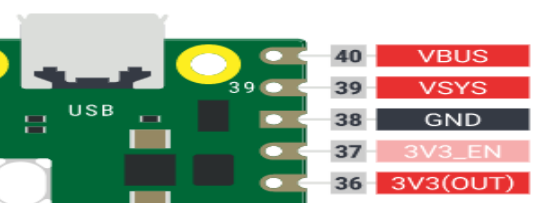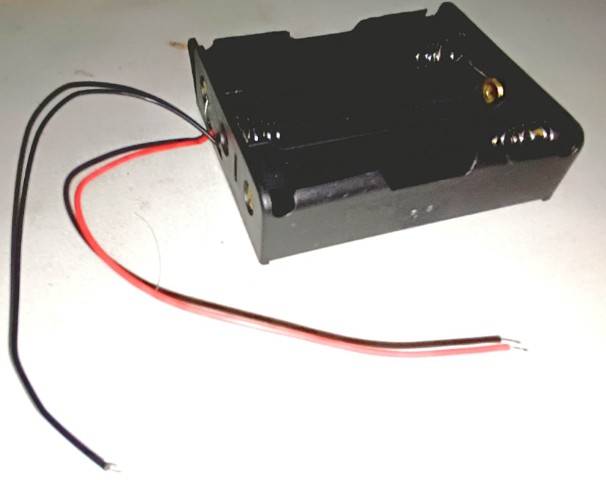Pure Electronics
 ←Index
←Index
Power to the Pico
by Professor Petabyte

Can a RPi Pico run on a 3.6v power supply?
The Raspberry Pi Pico is designed to run at 3.3V internally, and here's how power input works:
Power Supply Options:
-
VBUS (USB power):

Mouseover to Zoom
Typically 5V from USB port of a computer, a USB phone charger, or a powerbank.
! Problem with Powerbanks
N.B. While power banks are good way to easily power your pico with battery power, something to bear in mind is that some, typically the better more expensive ones, can have some issues with the very low power consumption of a Pico, and are designed to turn off if they don't sense enough power being drawn from them. Ironically this done to save power.
The simple solution to this problem is to make the Pico draw more power from the powerbank, which is easily done by adding an LED (or maybe two) to increase the AMPs drawn.
-
VSYS:

Mouseover to Zoom
Accepts 1.8V to 5.5V, this is the main power input if not using USB.
-
3V3:The regulated 3.3V output from the onboard regulator. Do NOT power the board through this pin unless you're bypassing the onboard regulator (which is strongly not recommended).
Why would you want to it run on 3.6V anyway?
If you want to run a Pico based system remotely from a mains power supply, a battery powered system is the obvious choice, but this comes with the overhead of batteries - incovenient and costly.
Therefore a system with rechargable batteries fed from a solar panel is a reasonable choice, provided that
- The amount of power required can be provided by solar panel(s).
- The system can be located where sufficient light is available.
Pico's normally require 3.3v. Normal batteries (e.g. AA, AAA, D, C, etc) provide 1.5 volts each, so two (3v total) is not enough and three (4.5v total) is too much, but rechargeable batteries of these sizes normally provide 1.2v each, so three of them give 3.6v total, which sits very nicely within the VSYS range of 1.8-5.5v.
So, it can run on 3.6V?
Yes, but only if you're powering through the `VSYS` pin.
- The Pico's onboard RT6150 buck-boost regulator can accept 3.6V on the `VSYS` pin and regulate it to 3.3V for the board.
- Safe input range for VSYS: 1.8V to 5.5V
Do NOT feed 3.6V directly into the 3.3V rail or you may damage the board.
Power Feed Summary
| Pin | Voltage Range | 3.6V Allowed? | Notes |
|---|
| VSYS | 1.8V - 5.5V | Yes | Main power input |
| 3V3 (out) | N/A | No | Not an input!
Do NOT supply power here. |
| VBUS | 4.5V - 5.5V (USB) | No | 3.6V is too little for VBUS |
If you're building a battery-powered project with a 3.6V Li-ion cell, you're good to go with VSYS.
This BIG question then...... How?
You might start by wondering "Surely there's a Solar Power Bank that can do this?". There may be, but many powerbanks regards low power consumption drains (e.g. Pico power) to be a wasted drain, and just turn off. Besindes where's the fun in using a pre-built thing.
So a better solution may be to use a raw 9v solar panel, and rig it up to keep some rechargeable cells charged and run the project.
This means that the complete system will comprise several parts.
- Solar Panel(s)
- Power regulator feeding Solar Panel power to rechargeable3 batteries
- Rechargeable3 batteries
- A Raspberry Pi Pico
- Any additional components required*.
* Which may needto be factored into the power supply capacity.
Don't miss the next installment of this page..............
© 2025 Professor Petabyte
 Mouseover to Zoom
Mouseover to Zoom Mouseover to Zoom
Mouseover to Zoom ←Index
←Index
